We manufacture biochar and regularly include it in our animal feed. It has made a noticeable improvement on the quality of our animals.
Add dry biochar to animal feed at 1/2 to 2 percent of the total feed by weight. It’s often added in powder form so that it coats the feed. It can be fed separately but may require a sweetener or grain product to make it more desirable to animals. Biochar can be added to any formulated livestock diet or animal feed. It can be added to any feed bin or included in any pelleted feed.
Let’s talk about why and how to use biochar to increase your animal’s health and performance.
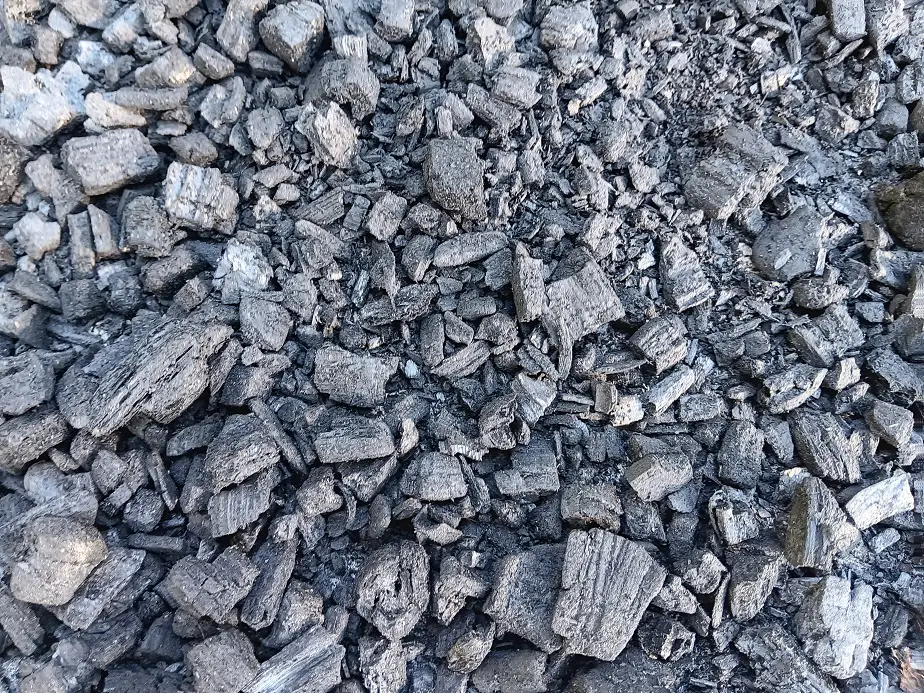
Adding Biochar to Animal Feed
Biochar is a form of charcoal that’s produced for agricultural purposes. It used to be called agrichar, but the name changed several years ago for marketability. While it’s a relatively new product term, adding charcoal to livestock feed has been done for thousands of years. It wasn’t until the last 10 years that we really started putting modern academic research into it.
When you buy biochar (basically activated charcoal), it’s mostly in powder form for smaller batches and in larger chunks when bought by the trailer load. Most fo the time, it’s used in powder form. That’s the easiest way to apply it. We use biochar with all the animals we raise. I mostly use it in powder form, but sometimes in its raw form of random-sized pieces.
I have used it at up to 6 percent of the feed, by weight, but now I prefer much lower ratios. I’ve found that around 1/2 percent by weight as part of the daily feed regimen shows a much better result than feeding higher amounts either regularly or periodically. So, I stick tio around 1/2 percent.
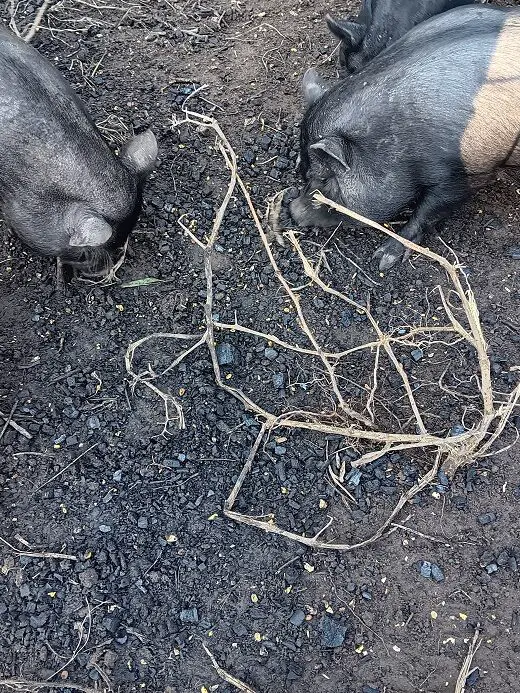
For the backyard farmer or hobbyist, that’s only 1/4 pound of dry char per 50-pound bag of feed. I’ve found that it usually coats the feed pretty well if I just sprinkle in in the hoper or feed bin. You can also mix it in small batches. One easy method it to put 20-25 pounds of feed in a 5-gallon bucket ( approx 2/3 full) and add 2 ounces of biochar to it. Stir, shake, or roll the bucket around a little to mix it.
I use barrels to store our grains and pellets. I just layer in the char as I fill the barrel. I sprinkle four ounces of char after every 50 pounds of feed is added. It mixes itself in as I scoop into the barrel at feeding time. As I said, I’ve found around 1/2 percent added to feed is a very good general application for all livestock.
You can use more, but I doubt you will see much additional results from it. When the dosage gets up to about 4 percent, you start to reduce the feed concentration to the point where your animals may show reduced gain and reduced energy intake. Biochar has no digestable energy to it, and often very little beneficial mineral content. But in low amounts, it shows incredible results.
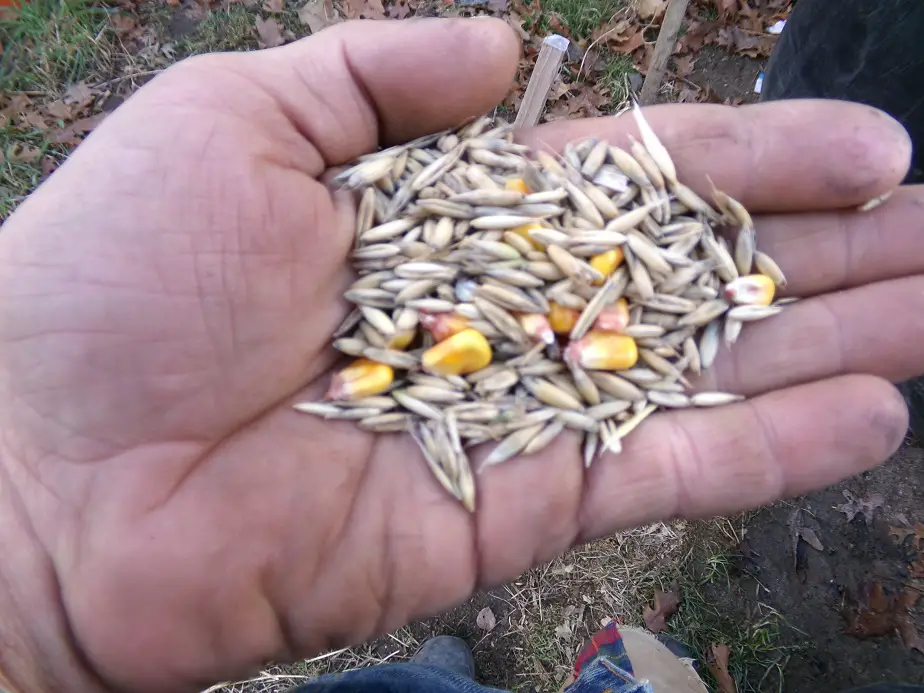
What Does Biochar Do in Livestock Feed?
Biochar has been shown to increase average daily gain, improve skin and coat condition, improve gut health, decrease pathogenic bacteria outbreaks, and control parasitic worms in most livestock. It also can bind up mycotoxins as well as herbicides and other chemical residues in feed, preventing them from harming the gut health of livestock.
The primary action of biochar is an increase in gut health and an improvement of healthy gut function in poultry and mammals. There are three or four different channels of function for this identified, but the best understood seems to be that biochar makes a change in pH, which tends to benefit the helpful gut microbiome and inhibit the common pathogenic bacteria.
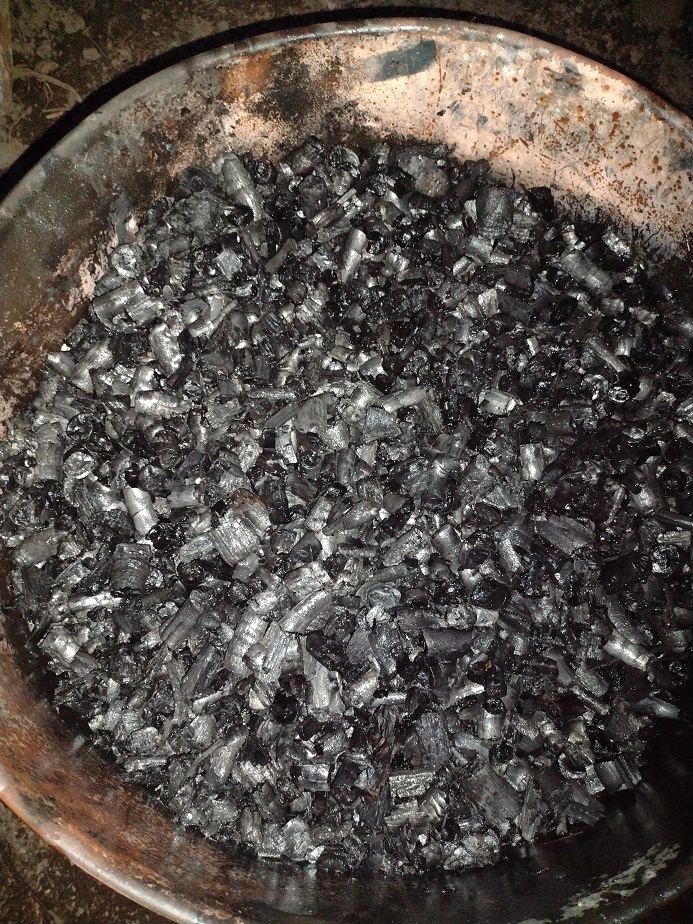
Biochar is shown to cause a significant decrease in E.coli and Salmonella, even going so far as being both a moderate treatment and an effective preventative for both. Biochar has been used to control these gut and manure-bound diseases in commercial piggeries and poultry barns. I know of more than one cattle farmer who have used biochar after getting a bad report on their E. coli counts.
In both cases, it was remedied with a 1/2 to 1 percent biochar addition. As biochar absorbs certain compounds in the feed, it tends to lead to a slight lessening of pH in the gut. This slight change has been regularly observed and has the effect of lowering pathogenic bacteria by 50-80 percent. As pathogenic bacteria lessen, beneficial bacteria increase to take their place. This makes less for the immune system to deal with, which allows it to focus harder on other aspects of animal health.
This effect has also been shown as an effective preventative and functional treatment of coccidiosis in pigs and poultry. Talk about a persuasive argument for the use of biochar in the feed industry!
The primary function in my mind, but lesser to the scientific field currently, is the action of absorbing common pesticides, herbicides, and fungicides before they reach the large intestine. These chemicals are all known to have a negative effect on soil microbiology in the field, and they have the same effect on the same bacteria in the gut.
This is much like how activated charcoal (really clean biochar) has been proposed to deal with glyphosate residue in the human diet. When the gut microbiome is off, both people and animals experience improper functions of metabolism, hormone regulation, and mood. It’s kinda wierd, but there is a definite scientific finding there.
It also improves the quality of manure as a fertilizer, causing it to better retain nitrogen and to be more slow-release in the soil. Manure that has biochar in it has been tested and reported tio contain 30 to 50 percent more nitrogen than manure from an untreated diet. That’s an interesting tidbit for ya. All that considered, it was more than enough for me to begin using biochar in our livestock feed.
What Animals Can Have Biochar?
Biochar has been tested as safe and effective for livestock including bovine, equine, sheep, goats, pigs, and farm poultry. It is also often used for dogs and cats. Biochar is likely safe for all manals and poultry, although clinical testing is lacking for many animals. Poor-quality biochar could pose a risk, but the concern is still very low.
Here is an article you might like: Biochar for Chickens (benefits, uses, and methods)
I personally use our biochar products in our piggery and poultry business. I am planning on including it in our rabbit’s diet in the near future. I do know of several horse owners who keep biochar on hand to treat gastric difficulties, but none are using it as a preventative yet. I would not fret about including biochar in the 1/2 to 2 percent range for any mammal or poultry. I firmly believe in its safety and its benefits.

How is Biochar Made?
Biochar is made from pyrolyzed carbonaceous material that was recently living. It’s most often made from wood, leaves, or grasses. It is heated above 600 degrees F in a low oxygen atmosphere until it has burned off the volatile compounds and has rendered to a primarily carbonic crystalline structure.
In common English, it’s dried organic matter that’s burned, but with limited oxygen so it doesn’t turn to ash. It’s basically charcoal, but a proper biochar should be cooked at a higher temperature and more thoroughly than a charcoal that’s used for fuel. It can be made both with very high-tech equipment and with the most rudimentary methods.
The result is a softer, cleaner, purer, more absorbent charcoal material. We use the term biochar to clearly differentiate between it and regular charcoal for fuel. Common charcoal contains significant amounts of volatile compounds which I don’t want in my animal feed, but that adds fuel value. A good biochar is a very clean, smoke and soot-free charcoal, but it burns too quickly for decent cooking.
My friend an hour north of our homestead makes biochar in a controlled-flow retort with a secondary burn chamber. It’s fancy and neat. I make biochar in an old steel barrel or a hole in the ground (the flame-cap pyrolysis method). Both options are functional. His is more hands-off but requires a deep pocket. Mine requires constant monitoring but no fancy equipment.
The goal of most biochar cookers is to get the temperature as hot as possible without burning it to ash. While there isn’t really a true standard, most char cookers, myself included, prefer temperatures near or in excess of 1,000 F. I keep mine between 850 and 1,100 degrees F. less and it produces bad char. More and it burns to ash.
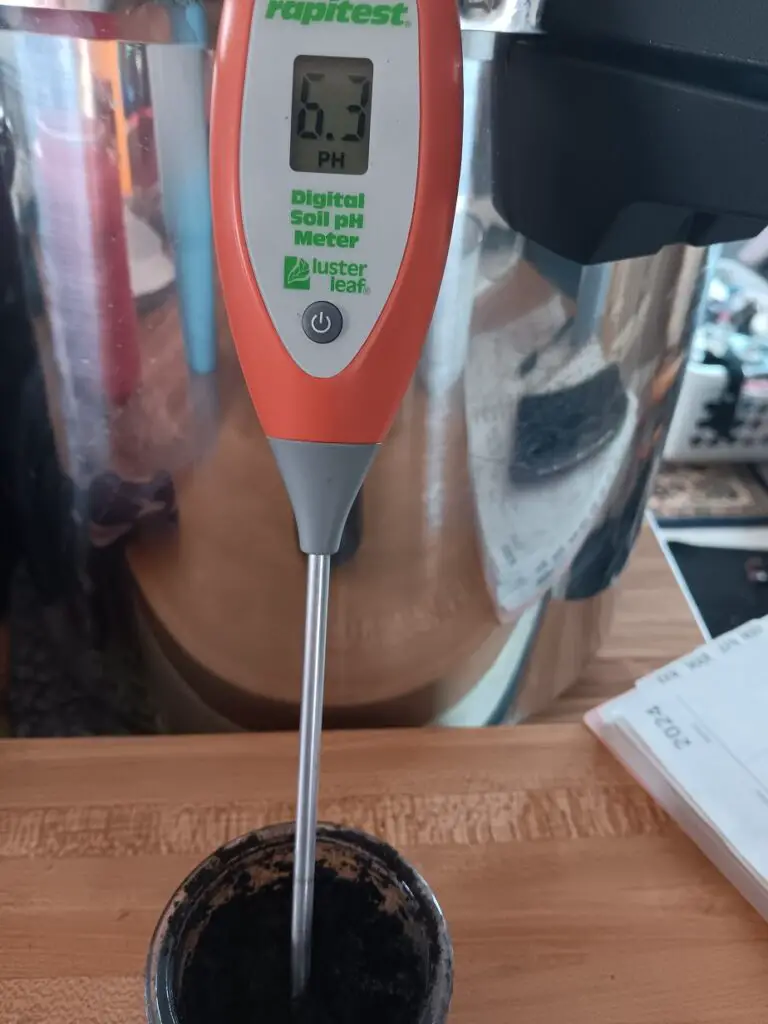
How To Tell if Biochar is High-Quality
A high-quality biochar should smell slightly of clean smoke, or no smoke at all. It should feel chalky but not greasy on your fingers, and its residue should easily wash off your hands. It should have a pH between 6 and 8, and it should be completely midnight black. A bad biochar will not be easy to break apart with your fingers, and may have a sour or foul smell.
Drawbacks of Using Biochar
Poor quality biochar may cause a lower efficiency gut function and harm the gut microbiome. It may cause health problems from carcinogenic agents and Poly Aromatic Hydrocarbons, naturally occurring tar compounds. These compounds can be concentrated by an improper burning of lower than recommended temperatures during biochar production.
Outside sources: National Library of Medicine-The use of biochar in animal feeding
Related Articles:

